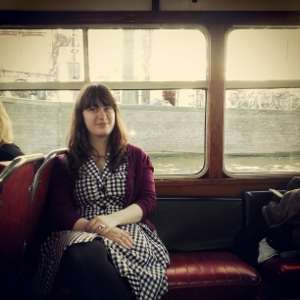Sergei Prokofiev’s Ouverture on Hebrew Themes is a 1919 work originally written for clarinet, string quartet and piano, although the composer himself orchestrated it in 1934. Prokofiev wrote it for the Jewish ensemble Zimro and claimed he was inspired by certain Jewish themes – although it was never discovered what folk songs these came from, fueling the idea that the composer may have written the themes themselves. Starting with a melody in the clarinet that remains the piece’s leitmotif, the Ouverture on Hebrew Themes is a lovely work. I was only familiar with the chamber music version and was quite intrigued to hear an orchestra play it, and pleasantly surprised when it turned out that the piece maintains all of its original clarity and strong melodies. Principal clarinetist Frank van den Brink played really well and Pablo Heras-Casado kept the pace up without hurrying, making it a most enjoyable performance.
Mieczyslaw Weinberg’s Violin Concerto in G was written in 1960 but had its Dutch premiere this evening and the violin concerto was beautiful. Although not as initially striking as some other works of the genre are, hearing it for the first time has certainly inspired me to seek it out and to explore more works by the neglected composer Weinberg. The first movement of the violin concerto almost sounded jazzy at times, with smooth, danceable rhythms and the violin playing the same theme in different variations. When a theme is repeated too often it can become quite dull, however, this was not the case as it actually enabled me to understand and appreciate the music without being overwhelmed, just impressed. The second movement was a much slower one, reminiscent of the first movement of Shostakovich’s Violin Concerto No.1 with its dark, brooding undertone. It seemed to me that the violinist Eugene Ugorski played slightly messily at times, and that perhaps in the hands of a violinist more familiar with the work, it would come out even better. The final movement of the concerto has an opening that is deceivingly classical in form, but the violin was quick to take over with its jumpy melodies, and at one point, the entire string section use their instruments as percussion which creates an exciting effect. To those who are unfamiliar with it, Weinberg’s music is definitely worth a listen.
Shostakovich’s Symphony No.10 is one of the most beautiful pieces of music I know. It has innumerable melodies each as beautiful as the next, which completely take hold of you. The Radio Philharmonic Orchestra can always be relied on to perform Shostakovich's Symphonies at an extremely high level – and tonight was no exception. Symphony No.10 is a work that is on the one hand bleak (as are most of Shostakovich's symphonies) and almost overwhelmingly depressive; but on the other hand, packed full of incredible and occasionally upbeat memories, with a second movement, that is one of the most hyperactive movements of any Shostakovich work. It is important to balance all these different elements; you don’t want an undercurrent to overshadow the melodies, yet the undercurrent is essential and shouldn’t be made less important than it is. The Radio Philharmonic Orchestra were led by Pablo Heras-Casado into a faultless performance - loud when it needed to be loud, I would particularly like to compliment Maike Grobbenhaar who played the piccolo- but with such beauty and nuance in the slower and more quiet section. The second movement was played at a high pace that suited the interpretation (indeed, it can hardly be played too fast but can certainly be too slow) and made everyone forget to catch their breath for the entirety of the movement.
The first and fourth movements are often considered the highlights of the symphony - they are both monumental in scope and length (the first especially, clocking in at around 25 minutes). Both these movements start off slowly and quietly, but not calmly. There is an intensity from the very first notes onwards that is much too unnerving to be calm. Of course, being Shostakovich, there are moments in both these movements that seem almost out of place - too happy, too jittery - but these moments provide perspective and some relief. Shostakovich’s famous DSCH-motif first appears elaborately in the fourth movement, ringing out passionately and loudly. If there was ever a signature piece of Shostakovich, this would probably be it, and the Radio Philharmonic Orchestra treated it as such. In all my experience of going to concerts, I would have to say that seeing Shostakovich’s 10th Symphony is always one of the most fulfilling experiences and tonight’s performance once again confirmed this – what incredible music!


